
The concept of stem cells appeared in the early 2000's in the cosmetics industry, but without quickly finding a logical and legitimate application. It will be a few years before this concept becomes generalized little by little. Its use has been made possible by several factors, but in particular by the emergence of a technology that some have called PSCT, for Plant Stem Cells Technology.
In this approach, the idea consists in using stem cells derived from plants, extracts of meristems or others, in order to produce active principles intended to maintain, maintain or correct certain aspects of cutaneous physiology. This technology was already known, but without having been formalized in such a precise way, the use of bud extracts, for example, was a very old practice. Advances in technology, and better knowledge, will gradually refine these concepts until they become a fairly common practice in print approaches. To date, there are many such extracts.
Today, Vincent Briffaut allows us to understand a little better how one of the pioneer companies of these technologies, Mibelle Biochemistry, developed the first extracts presented as such and in particular the PhytoCellTec™ Malus Domestica. This ingredient, like some rare others, will significantly mark its time as having opened new approaches in the field of formulation as well as in anti-aging strategies.
Jean Claude Le Jollif

The birth of PhytoCellTec™ Malus Domestica
Basic research in the field of stem cells has been in constant progression for several years and today's advances certainly contribute to finding tomorrow's solutions to serious diseases or handicaps.
Indeed, to date, experiments are underway in France and around the world to regenerate tissues from human stem cells. Recreating sight by recreating the retina from stem cells, curing diabetes by differentiating stem cells into pancreatic cells capable of synthesizing insulin or even reconstructing the skin to treat skin lesions are no longer utopias close to science fiction but now represent legitimate hopes for the treatment of chronic or orphan diseases.
Adult stem cells and their role in tissue regeneration
There are several forms of stem cells. The most"complete" form is the embryonic stem cell. Because of its totipotent character, this cell is the only one capable of giving all the differentiated cells of the organism. Adult stem cells, on the other hand, are undifferentiated cells capable of self-renewal and differentiation into cell forms specific to the tissue in which they evolve. They are called"multipotent cells". Tissue regeneration depends primarily on the ability of adult stem cells to generate the daughter cells needed for tissue repair and replacement. It is therefore obvious that a decrease in adult stem cell activity leads to a decline in the regenerative potential of tissues and accelerates aging.
The skin consists of two layers, each with its own stem cells.
• The epidermis contains adult stem cells in the basement membrane. It is estimated that 2 to 7% of basement membrane cells are epidermal stem cells. Following asymmetric division, stem cells produce transient amplification cells (i.e. cells in the differentiation phase) which, after a limited number of divisions, enter a terminal differentiation phase. The cells thus produced gradually migrate into the epidermis as far as the stratum corneum. With time, the renewal of the epidermis becomes less well and the skin becomes thinner, more fragile and more prone to aggressions.
• The dermis also contains its own stem cells whose niche has recently been identified in the papillae of the dermis. These stem cells renew themselves, migrate to the dermis and differentiate into fibroblasts. As a reminder, dermal fibroblasts are able to interact with epidermal cells (especially epidermal stem cells) and control the thickness and elasticity of the dermis through collagen and elastin synthesis. These proteins constitute the extracellular matrix. As we age, the number of senescent fibroblasts increases and the production of structural proteins decreases accordingly. The replacement of aged fibroblasts by the action of dermal stem cells is therefore of fundamental importance for the prevention of skin ageing.
It seems obvious that the need for new cells in a tissue is directly linked to the proliferation of stem cells and their differentiation into transient amplification cells and then into totally dedicated daughter cells. Therefore, treatments that enhance the functional capacity of stem cells are effective solutions for tissue renewal and maintaining young, healthy skin.
Plant stem cells to protect skin stem cells
When Mibelle Biochemistry researchers became interested in the roles of stem cells in the skin and how to protect them from aging, their reasoning very quickly focused on plant stem cells as an active ingredient.
PhytoCellTec™ is the name of the technology developed by Mibelle Biochemistry to generate and cultivate plant stem cells. The PhytoCellTec™ technology is based on the healing capabilities of plants. Indeed, when a plant suffers an injury, the first phase of healing consists in the formation of a callus. The constituent cells of this callus are undifferentiated cells (plant stem cells) which will, depending on the nature and location of the injury, differentiate into specific cells. Plant stem cells have a totipotent character that adult human stem cells no longer possess: from a plant stem cell it is possible to reconstitute the whole plant.
In order to create the active ingredients based on plant stem cells, it is therefore necessary to induce the formation of a callus, to which end a small part of the plant is removed (leaf, fruit, root, germ) and then injured. The stem cells from the callus are then cultured in specific media and produced on a larger scale in bioreactors specially developed for this production. Once the culture is sufficient, the plant stem cells are harvested and lysed before being vectorized as liposomes. This vectorization step allows the active compounds to penetrate more easily to the basement membrane in the case of epidermal stem cells. For dermal stem cells, liposomes penetrate via the follicular route to the papillae of the dermis.
PhytoCellTec technology ™ is part of a true sustainable development approach since plant stem cells are grown from a small part of the plant. It is not necessary to harvest the whole plant and this technology is therefore perfectly suited to the enhancement of rare or partially protected plants such as the apple species UtwillerSpätlauber which was used for the creation of the first active plant stem cell : PhytoCellTecMalus™ Domestica. Moreover, plant stem cell culture is not water-intensive and is, of course, without pesticides, fertilizers or GMOs. During the conference on sustainable development in Rio in 2012, the technology PhytoCellTec™ was presented as a major advance in ecodevelopment.
Plant stem cells and adult stem cells are undifferentiated cells whose degree of differentiation is controlled by gene expression modulation. This modulation of gene expression is done under the influence of modification enzymes, themselves regulated upwards or downwards by molecular activators or inhibitors: we speak of epigenetic factors. All stem cells, regardless of their origin (animal, human or plant) contain these epigenetic factors whose function is to maintain the stem cell's capacity for self-renewal. That's why plant stem cells help preserve the vitality of skin stem cells.
Numerous studies in vivo and in vitro have been set up by Mibelle Biochemistry research teams to demonstrate the positive effect of plant stem cells on skin stem cells. In addition to clinical objectivation tests, a cell culture model was developed that allowed us to demonstrate that the contribution of plant stem cells of different species (apple, grape, comfrey, Rose des Alpes) protected epidermal stem cells from aging and photo-aging. Skin stem cells treated with plant stem cells retain all their capacity to reconstitute a stratified epidermis despite an accelerated ageing protocol. At the dermal level, the influence of Argan and Saponaria Pumila stem cells also helps to preserve all the regenerative capacities of dermal stem cells and to fight in depth against the loss of density of the dermis.
To find all the references of this technology, a website has been set up . The application"plant stem cells to protect skin stem cells" has been patented by Mibelle Biochemistry. By improving the skin's regenerative capacities, the active ingredients in the PhytoCellTec™ range act as high-tech anti-aging products.
Vincent Briffaut
| Contribution made by Vincent Briffaut Vincent Commercial Manager of Mibelle Biochemistry for France. With a scientific and commercial background, he first worked in the distribution of raw materials for the cosmetic and pharmaceutical industries and then joined a producer of active ingredients as Commercial France. Since April 2009, he has been in charge of the technical promotion and commercial representation of Mibelle Biochemistry's active ingredients to French players in the cosmetics industry. |
PhytoCellTec™ Malus Domestica
It is a liposomal active substance based on stem cells from the apple Uttwiler Spätlauber.
The apple
Uttwiler Spätlauber is an old Swiss apple variety, now very rare. It was known for its exceptional capacity of conservation but, as it had a rather bitter taste, it disappeared with the profit of the apples with the sweeter taste. As this apple could be stored for a long time without wrinkling or losing taste, it had to contain special substances and stem cells with a particularly long lifespan. It was precisely these longevity factors that were of particular interest to Mibelle Biochemistry researchers.
His action
In global studies, Mibelle Biochemistry has shown that PhytoCellTec™ Malus Domestica, the substance based on apple stem cells, increases the vitality and longevity of epidermal stem cells and slows down their aging.
Increased stem cell vitality Cultures containing epidermal stem cells were treated with different concentrations of PhytoCellTec™ Malus Domestica and their dividing capacity (Colony-Forming Efficiency) was determined. It has been demonstrated that PhytoCellTec™ Malus Domestica has a clearly positive effect on stem cell characteristics.
Maintaining the ability to form new epidermal tissues Young and active epidermal stem cells are capable of forming an epidermis composed of all its layers in the laboratory. If old stem cells are used for this test, the cells no longer multiply and the formation of the epidermis is interrupted accordingly. These stem cells are exhausted and at the end of their life cycle. But if, during the culture of the Malus Domestica stem cell, a stem cell extract is added, even the"old" cells are still capable of generating a complete epidermis. Under the influence of Malus Domestica stem cell extract, epidermal stem cells retain their vitality longer and are able to form new tissues and regenerate the skin.
Anti-wrinkle action
The anti-wrinkle action of PhytoCellTec™ Malus Domestica was analyzed during a clinical study involving 20 people, aged 37 to 64 years. A 2% emulsion of PhytoCellTec™ Malus Domestica was applied to the crow's feet area for 28 days. The results showed a clear and significant reduction in wrinkles in all these people.
 About Mibelle Biochemistry
Mibelle Biochemistry
designs and develops unique, high quality active ingredients for the cosmetics industry based on natural substances and high scientific expertise.
This independent business unit within the Mibelle Group was founded in 1995 by Dr Fred Zülli in Buchs, Switzerland. In a short time, Mibelle Biochemistry has built an excellent reputation worldwide as a creator of innovative active ingredient concepts and a true expert in the fields of biotechnology and biochemistry. Its wide range of assets is available in over 50 countries worldwide.
About Mibelle Biochemistry
Mibelle Biochemistry
designs and develops unique, high quality active ingredients for the cosmetics industry based on natural substances and high scientific expertise.
This independent business unit within the Mibelle Group was founded in 1995 by Dr Fred Zülli in Buchs, Switzerland. In a short time, Mibelle Biochemistry has built an excellent reputation worldwide as a creator of innovative active ingredient concepts and a true expert in the fields of biotechnology and biochemistry. Its wide range of assets is available in over 50 countries worldwide.
|




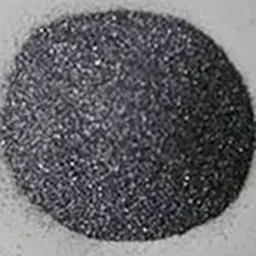
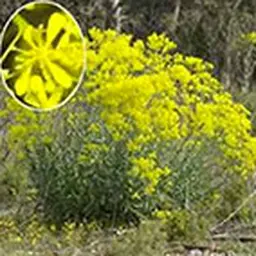
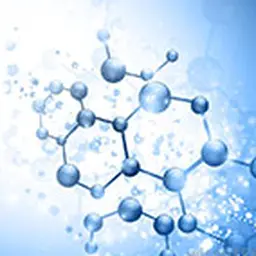
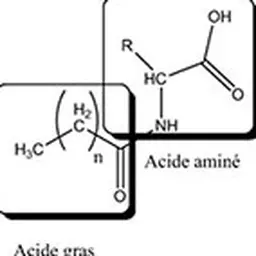

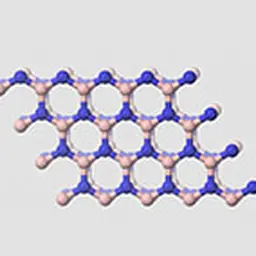
![By Rock Currier (http://www.mindat.org/photo-237295.html) [CC-BY-3.0 (http://creativecommons.org/licenses/by/3.0)], via Wikimedia Commons](https://d2aabgjce9enf.cloudfront.net/main/media/content/5/c/5cf74a4a92ef1b89e0549ec097048f7d3268ec4a--sm-noborder.webp)
![Par Ben Mills (Travail personnel) [Public domain], via Wikimedia Commons](https://d2aabgjce9enf.cloudfront.net/main/media/content/5/b/5b62847bc4229696df593a6b14899855ab56385e--sm-noborder.webp)
![Par Xvazquez (Travail personnel) [CC-BY-SA-3.0 (http://creativecommons.org/licenses/by-sa/3.0) ou GFDL (http://www.gnu.org/copyleft/fdl.html)], via Wikimedia Commons](https://d2aabgjce9enf.cloudfront.net/main/media/content/5/5/55b47c064570b73285696cf00e7203d6ab77a89b--sm-noborder.webp)